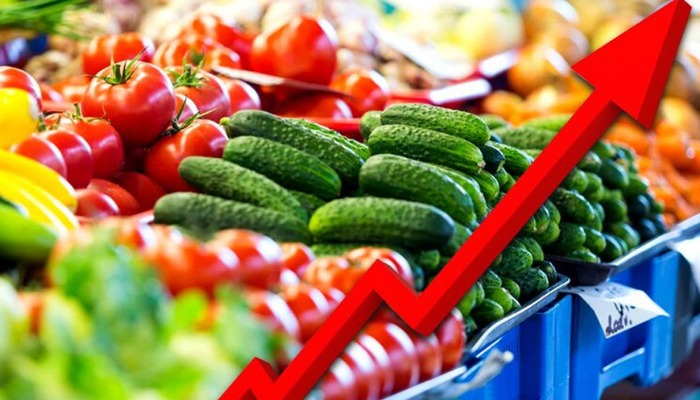Nigeria’s headline inflation slowed to 22.22% in June 2025 from 22.97% in May, marking a 0.75 percentage point drop, according to the National Bureau of Statistics (NBS). The decline also represents a notable 11.97-point decrease from June 2024, when the rate stood at 34.19%.
The NBS explained in its latest Consumer Price Index (CPI) report released on Wednesday that the easing in the year-on-year figure reflects changes in the rebased index, now using 2024 as the new base year.
However, the surge on a month-to-month basis increased slightly, rising to 1.68% in June from 1.53% in May, highlighting ongoing price increases for essential goods and services. The CPI index rose from 121.4 in May to 123.4 in June, driven by persistent pressures in food, transportation, and housing.
“The Consumer Price Index rose to 123.4 in June 2025, reflecting a 2.0-point increase from the preceding month. In June, the headline inflation rate eased to 22.22% compared to May’s 22.97%. On a year-on-year basis, it was 11.97 percentage points lower than the 34.19% recorded in June 2024,” the report stated.
Food prices continue to drive inflation
Food price increase, a key driver of the overall index, dropped year-on-year to 21.97% in June from 40.87% a year ago — a sharp decline attributed largely to the new base year. But monthly food inflation surged to 3.25%, up from 2.19% in May, due to rising prices of items like tomatoes, dried peas, crayfish, meat, pepper, and plantain flour.
The average annual food increase rate for the 12 months ending in June 2025 fell to 28.28%, down from 35.3% in the previous year.
Urban price hike dipped year-on-year to 22.72% from 36.55% in June 2024. However, month-on-month, it climbed to 2.11% in June from 1.40% in May. The 12-month average urban inflation rate was 28.16%.
In rural areas, annual inflation eased to 20.85% from 32.09% a year earlier. But the month-on-month rate declined to 0.63% in June, from 1.83% in May. The rural 12-month average came in at 24.65%.
State-by-state breakdown
Borno posted the highest year-on-year inflation rate at 31.63%, followed by Abuja (26.79%) and Benue (25.91%). The lowest rates were in Zamfara (9.90%), Yobe (13.51%), and Sokoto (15.78%).
On a month-to-month basis, Ekiti (5.39%), Delta (5.15%), and Lagos (5.13%) recorded the biggest increases. Meanwhile, Zamfara (-6.89%), Niger (-5.35%), and Plateau (-4.01%) saw notable declines.
Borno also led in year-on-year food surge at 47.40%, followed by Ebonyi (30.62%) and Bayelsa (28.64%). Katsina (6.21%), Adamawa (10.90%), and Sokoto (15.25%) recorded the lowest rates.
For month-on-month food surge, Enugu (11.90%), Kwara (9.97%), and Rivers (9.88%) experienced the sharpest rises, while Borno (-7.63%), Sokoto (-6.43%), and Bayelsa (-6.34%) saw the steepest declines.
The categories contributing most to the overall inflation rate included food and non-alcoholic beverages, transportation, housing, electricity, gas, education, health, and clothing.
While the annual figures point to a gradual easing of inflationary pressures — likely reflecting policy adjustments and the effects of a rebased index — the uptick in monthly inflation signals that many Nigerian households are still grappling with rising living costs.



